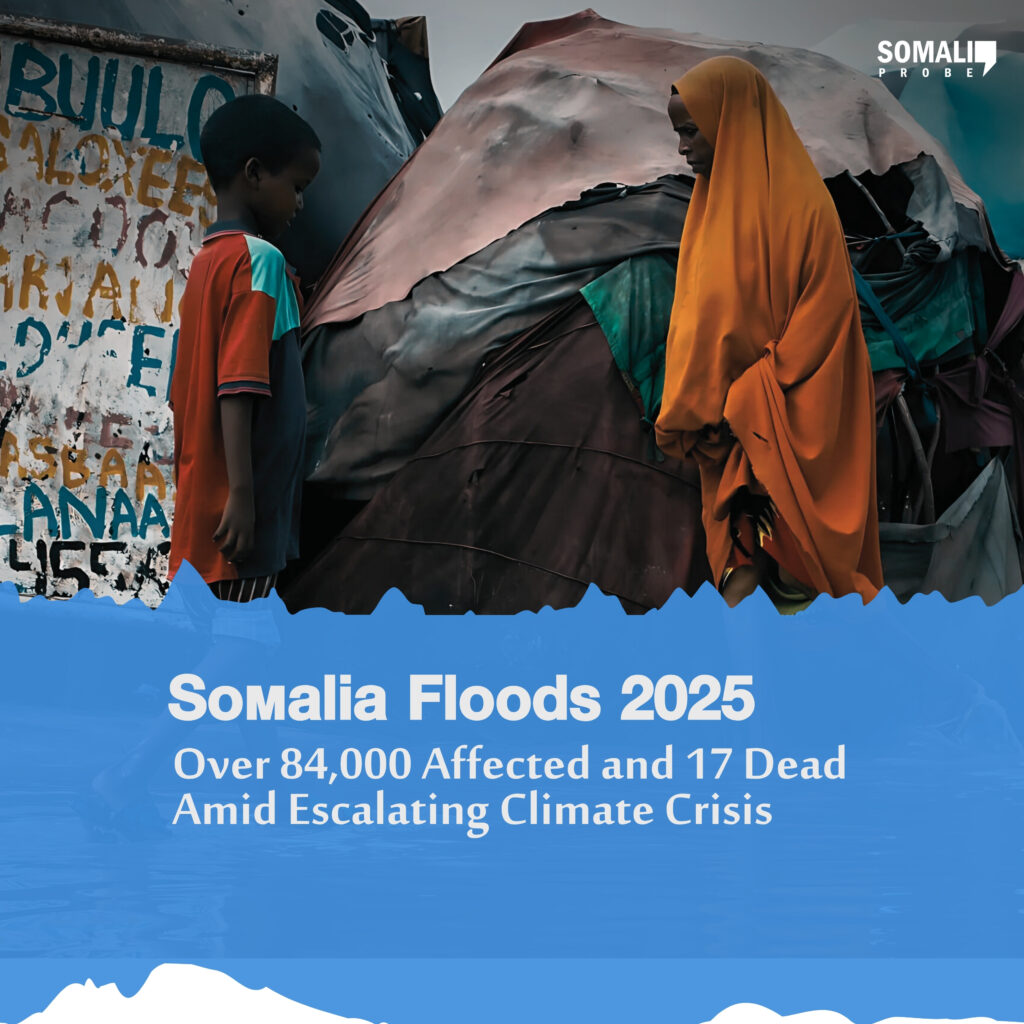In recent weeks, flash floods in Somalia hit the country by yet another devastating wave.
These floods have directly impacted tens of thousands of people.
Over 84,000 Individuals were Affected by Flash Floods in Somalia
According to a report released on Tuesday by the United Nations Office for the Coordination of Humanitarian Affairs (OCHA), the latest floods, which began in mid-April, have claimed the lives of at least 17 people.
They also affected over 84,000 individuals across various regions in southern and central Somalia.
Why Flash Floods in Somalia Are Happening?
The report confirms that flash floods in Somalia were caused by intense seasonal rains.
Moreover, the flash floods swept through both residential and agricultural areas, becoming more frequent and severe due to climate change, which is increasingly affecting the Horn of Africa.
The Horn of Africa—which includes Somalia, Ethiopia, Kenya, and Djibouti—is one of the regions most vulnerable to extreme climate conditions.
El Niño Weather Phenomenon
In recent years, this region has experienced a surge in climate-related disasters.
Such as droughts and floods, worsened by the El Niño weather phenomenon that disrupts rainfall and temperature patterns worldwide.
Impact of Flash Floods in Somalia
The floods have caused widespread destruction, damaging roads, homes, schools, and health facilities.
While also destroying farmland—raising concerns of increased internal displacement and food insecurity.
With over 84,000 affected and more rain expected, the humanitarian situation remains dire.
Meteorological agencies have warned that more rainfall is likely in the coming days.
Particularly in low-lying areas along the Shabelle and Juba rivers, which have already begun to overflow.
Humanitarian Response
OCHA has also noted that humanitarian organizations are facing severe funding shortages, limiting their ability to respond quickly and effectively.
These NGOs are usually among the first to respond to crises, but dwindling international aid is hindering emergency relief efforts.
Somalia was already grappling with severe humanitarian challenges.
Due to decades of conflict, weak infrastructure, and repeated droughts.
Somalia floods have only worsened an already fragile situation, calling for urgent international support.
2023 Floods Were a Warning Sign
This is not the first time Somalia has faced devastating floods.
In 2023, the country endured catastrophic flooding that killed over 100 people and displaced more than 1 million, following heavy rains linked to El Niño.
Despite that tragedy, not enough has been done to prevent a repeat of the disaster.
This raises serious questions about the readiness and capacity of both Somali authorities and the international community to build climate-resilient infrastructure.
Urgent Calls
In light of the worsening crisis, the UN and global aid agencies have issued urgent calls for emergency funding, increased humanitarian efforts, and long-term investments in climate adaptation.
Immediate needs include food, shelter, and clean water for thousands of displaced families.
A Warning About the Future
Flash floods in Somalia highlights the dangerous path ahead if the world continues to neglect climate change and humanitarian preparedness.
What’s unfolding in Somalia is not just a seasonal crisis—it’s a wake-up call to reimagine global climate policies and prioritize aid to fragile regions like Somalia, which are now frontline victims of a global emergency.


